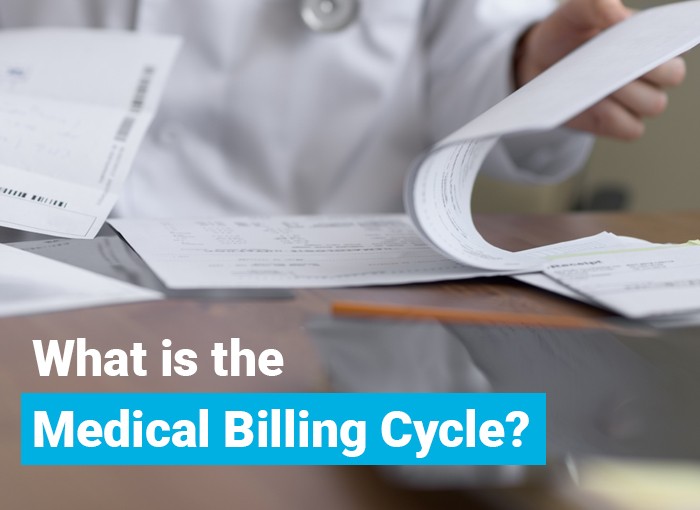What is a medical billing cycle?
Medical billing has a cycle of steps that’s completed by billing specialists to ensure that providers are reimbursed for their services.
Contingent on the conditions, it can require only days to finish or may extend more than a little while or months.
While the process might contrast somewhat between medical offices, here is an overall blueprint of a medical billing workflow.
- Patient registration
Patient registration is the first and the foremost step on any medical billing flow chart. This is the collection of fundamental segment data on a patient, including name, birth date, and the reason for a visit.
Insurance information is accumulated, including the name of the insurance provider and the patient’s policy number, and confirmed by billers.
This information is utilized to set up a patient record that will be alluded to during the medical billing process.
- Superbill creation
During check-in, the patient will be approached to complete forms for their file, or then again in case it is a return visit, confirm or update information already on file.
Distinguishing proof will be requested, as well as a valid insurance card, and co-installments will be collected.
At the point when the patient looks at, medical reports from the visit are converted into diagnosis and procedure codes by a medical coder.
Then, at that point, a report called a superbill might be compiled from all the information gathered thus far.
It will incorporate provider and medical information, the patient’s segment data and medical history, information on the procedures and services performed, and the applicable diagnosis and procedure codes.
- Claims generation
At the point when the claim has been checked for accuracy and compliance, submission is the next step.
All things considered, the claim will be electronically sent to a clearinghouse, which is an outsider company that goes about as a contact between healthcare providers and health insurers.
The exception to this rule is high-volume payers, like Medicaid, who will acknowledge claims directly from healthcare providers.
- Monitor claim adjudication
Adjudication is the process by which payers assess medical claims and decide if they are legitimate and compliant, and assuming this is the case, the amount of reimbursement the provider will receive.
During this cycle, the claim might be acknowledged, dismissed, or denied. An accepted claim will be paid by the insurer’s agreements with the provider.
A rejected claim has blunders that should be revised and the claim resubmitted. A denied claim is one that the payer won’t reimburse.
- Payment posting
Payment posting is a critical step of the RCM of any practice. This important RCM step includes posting, deposit functions and reconciling posting activities with deposits. The payment posting step influences many other functions of the medical office and can altogether influence patient satisfaction, efficiency, and overall financial performance.
- Patient statement preparation
At the point when the claim has been processed, the patient is billed for any outstanding charges. The statement for the most part incorporates a detailed list of the procedures and services provided, their costs, the sum paid by insurance, and the sum due from the patient.
- Statement follow-up
The last and the final step in the medical billing process is to guarantee bills are paid. Medical billers should circle back to patients whose bills are late, and, when significant, send records to collection agencies.




